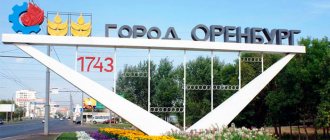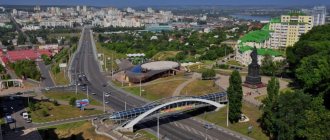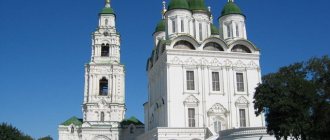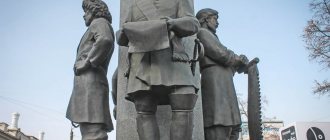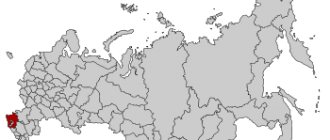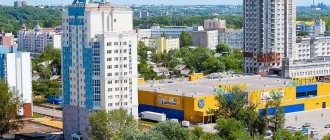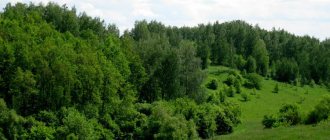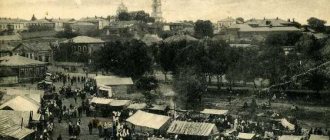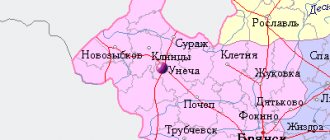There are 86 regions in our huge country, and each of them has its own digital designation on the license plate. Of course, it is quite difficult to remember them all, and when you encounter the next value, it is not possible to find out which subject of the Russian Federation this car came from. You will find a detailed answer on this page.
Most registration plates are standard plates of the 1993 model, the type of which is determined by GOST R 50577-93 (Order No. 362 of July 30, 1993 on new state registration plates of vehicles).
Initially, only numbers from 01 to 89 were used as region codes, according to the number of regions of the Russian Federation as of January 1, 1993. However, the number of registered cars increases every year, and license plates with valid combinations are beginning to be scarce. For this reason, a number of Russian regions have introduced additional codes that can be used on signs; First, the issuance of region codes from 90 to 99 began (except for code 92, which was subsequently used in Sevastopol), and then they switched to three-digit region codes. For three-digit codes, at first it was allowed to use only one as the first digit, from 2013 - 1 and 7, and from the summer of 2022 - any digit other than zero.
Try your luck:
Click on the handle and try to get a nice number =)
O777OO
AVEKMNORSTUKHAVEKANORSTUKHAVEKMNORSTUKHKMNORSTUKHKMNORSTUKHKMNORSTUKH 1234567890123456189012345678901234567890789078907890 12345678901234561890123 456789012345678907890012345 12345678901234561890123456789012345678901234567890 AVEKMNORSTUKHAVEKANORSTUKHAVEKMNORSTUKHAVEKMNORSTUKHVEKMNORSTUKH AVEKM NORSTUKHAVEKANORSTUKHAVEKMNORSTUKHAVEKMNORSTUKHVEKMNORSTUKH
48
RUS
WOW! The probability of getting such a number is 1 in 14400!! You're lucky! Take a screenshot and post it in the comments!
Climate and geography of the Central Federal District
The Central Federal District is located on the East European Plain, there are a number of hills (Central Russian, Valdai), but in general the territory of the district can be considered flat, there are no high mountains here. The highest point is 347 meters. Natural zones: mixed forest and deciduous forest mainly in the north, steppe and forest-steppe mainly in the south.
The climate throughout the Central Federal District is temperate continental, the average temperature depends on the latitude, ranging from -7 to -14 in January and from +16 to +22 degrees Celsius in July.
The largest rivers of the Central Federal District: Western Dviga, Dnieper, Don, Volga. There are practically no large lakes, but there are many reservoirs, which are the most significant water bodies (Rybinskoye, Kostroma, etc.).
A few more facts about the Lipetsk region:
- It borders with Kursk, Oryol, Tula, Ryazan, Tambov and Voronezh regions.
- The city of Lipetsk is the first Russian resort.
- Lipetsk mineral water is similar in composition to the mineral waters of famous German resorts - Liebenstein and Thurmont.
- Lipetsk did not suffer from bombing during the Great Patriotic War, thanks to the personal order of Hermann Goering.
- It is believed that Lipetsk was founded by Peter I.
Go to the full catalog of Region Codes >>>
HOW LIPETSK BECAME A PROVINCIAL CITY?
On the eve of Christmas, the Lipetsk region celebrated its 60th anniversary. On January 6, 1954, the Decree of the Presidium of the Supreme Soviet of the USSR on its creation was adopted. The new region included lands with settlements in the Ryazan, Voronezh, Kursk, Tula, Tambov and Oryol regions. But why was Lipetsk chosen as the administrative center of the new region, because among the cities included in it were Yelets, Dankov, Usman, Lebedyan, Zadonsk - settlements with a rich history and centuries-old urban culture? Yelets was once the capital of the ancient Russian principality.
Before 1954, Lipetsk could once have become a provincial city - immediately after the revolution of 1917, when the Tambov provincial executive committee (Lipetsk was a district city of the Tambov province) lost control over the region, and Lipetsk, on the contrary, gained strength. Then the Lipetsk residents were hindered by a complex of deep provincials, and the Lipetsk revolutionary deputies refused the offer to govern a huge province, including the entire present-day Tambov region.
AND THE REGION COULD BE ELETSKAYA
By the 50s of the last century, Lipetsk, which grew out of a factory settlement, remained a small town with a population of 38 thousand people, while neighboring Yelets had more than 120 thousand citizens. However, in Lipetsk by that time there were the Lipetsk Metallurgical Plant (current NLMK), a metallurgical plant, a radiator plant, and, as they say today, a whole metallurgical cluster had formed. The country needed a powerful breakthrough. The government recognized the powerful metallurgical potential in Lipetsk and decided to create a new administrative unit. True, it was originally planned to make Yelets its center, and the new region was to be called Yeletskaya.
“In fact, at that time the issue of creating the Yelets region with a center in Yelets was considered,” says Igor Kozmirchuk, head of the Foundation for Scientific Local History. — Yelets was a large city with a rich history and powerful economic potential. It is worth noting that in 1846 Yelets was equalized in trade rights with provincial and port cities. In Yelets in 1888, the first elevator in Russia was built, trade, banking, and the leather industry developed, and the production of tobacco and shag was established. Part of all this remained after the revolution. In addition, the city was already a large railway junction with the appropriate infrastructure, there were many schools and hospitals in Yelets, and a pedagogical institute was created in 1939 (now Yelets State University named after I. A. Bunin). In a word, everything was ready for a whole region to begin to take shape around Yelets. And most importantly, the plans of the Council of Ministers of the RSFSR included the construction of a metallurgical plant in Yelets. Moreover, it was planned to develop not ferrous metallurgy, which settled in neighboring Lipetsk, but non-ferrous metallurgy. In Yelets they were going to build a copper foundry that would operate on imported raw materials. But any metallurgical production at that time required a lot of water. And to create a reservoir it was necessary to block Bystraya Sosna, flooding the Zasosnenskaya part of the city and relocating people from there.
After weighing all the pros and cons, the country's leadership considered it too costly. After which attention was paid to Lipetsk with an already developed metallurgical infrastructure and an existing LMZ, which it was decided to raise to the level of an industry giant, which later came to fruition.
TWICE IN THE ONE RIVER
“Surprisingly, it was metallurgy that twice gave a powerful impetus to Lipetsk,” continues Igor Kozmirchuk. — There is a certain historical pattern: at the beginning of the 18th century, Peter I was conducting active military operations in the South and North of the state, the need arose for the development of metallurgy, primarily for the manufacture of weapons, and metallurgical Lipetsk appeared on the map of the country, that is, initially Lipskaya Sloboda with factories. 76 years pass, the settlement becomes the district city of Lipetsk, but metallurgy, having given it life, practically dies. 175 years later, in a completely different state, the USSR, the need for metallurgy again appears, which gives a new impetus to development, first for the city, and then for the entire region. All paths converge here in Lipetsk: nearby is the Kursk magnetic anomaly, the raw material base of the Belgorod region, convenient transport interchanges - the intersection of roads between North and East, West and South. Very quickly, a “redistribution” of the territories neighboring Lipetsk was carried out, and a new administrative center with a major metallurgical giant began to be born.
It should be noted that the territories included in the Lipetsk region were, one might say, “waste” for neighboring regions. They were their remote outskirts, and when they became districts of the new region, and located close to the regional center, they benefited. The leaders of the Kursk, Oryol and Ryazan regions honestly admitted: one day was not enough to visit these remote areas. Lack of paved roads, poverty and outback - this is what the territories that were transferred to the Lipetsk region represented.
WHO "HAS COME IN FULL" HERE?
The construction of NLMZ-NLMK - a giant of metallurgy, and other enterprises, also not small, took place in parallel with the construction of, in fact, a new city, a new Lipetsk. And in twenty years there was a colossal leap: the population of Lipetsk increased by an order of magnitude - from 38 to 350 thousand. Unfortunately, at the same time, the historical appearance of the city, all its cultural monuments from the times of Peter the Great and Catherine, and most of the churches were almost completely destroyed. Modern infrastructure was being built, microdistricts with spacious streets and avenues, in which hundreds of thousands of people were to live, building the new Lipetsk.
Who were they, these new Lipetsk residents? At the everyday level, many believe that for the most part Lipetsk was built by yesterday’s peasants, who flocked to the city “for rubles” and free apartments, and by “chemical prisoners” who were herded to all-Union construction sites. There was even a statement that today's Lipetsk resident is a boorish, poorly educated, uncultured type. The Internet is replete with comments on this topic: “Lipetsk collective farm”, “Lipetsk cattle”. They even try to decipher the word “redneck” as “resident of the Lipetsk region.” Lipetsk residents sometimes reward themselves with such offensive epithets.
“But this is absolutely not true,” Igor Kozmirchuk is sure. — In fact, there are not so many native Lipians, probably about five percent. These are those Lipetsk residents whose several generations lived in the city. But who came? In order to build enterprises and work for them, specialists were needed first of all: builders, engineers, metallurgists, foundry workers. Collective farmers were needed mainly for auxiliary, unskilled work. There were, of course, residents of distant villages who came to work, and “chemist prisoners,” but they did not form the backbone of those same Lipetsk residents. Lipetsk metallurgy was created by specialists from regions where this industry was already well developed: the Dnepropetrovsk region, Zaporozhye, the Urals and Siberia. They founded dynasties here that are still known today. I will name only one surname - Frantsenyuk... So those who built the new regional center cannot be called “lapotniks” or “collective farmers”.
By the way, new microdistricts and multi-storey buildings were erected by specialists from Moscow, Leningrad, Kyiv, Minsk, many of them stayed to live here. It should also be remembered that Lipetsk historically developed as a city of aviators, where even before the revolution there was an airfield with those very first Ilya Muromets aircraft, and after the revolution the largest aviation school operated. Those who were involved in Lipetsk aviation are also very literate and very educated people. But even if we take the indigenous Lipetsk people, these were also the descendants of those who were involved in metallurgy here in Peter’s times. So Lipetsk residents, who are critical of their fellow countrymen, needlessly think poorly of themselves, and even more so of their ancestors.
WHAT'S IN THE PERSPECTIVE?
“Will the Lipetsk region survive on the map of Russia as a federal subject?” - This question probably worries many today. First of all, in light of the administrative reforms being carried out in the country and the consolidation of regions. Perhaps none of the residents of the region, which celebrated its 60th anniversary, knows a definite answer. The consolidation of regions - the annexation of weak, poorly governed ones to stronger ones - according to the logic of action, does not apply to the Lipetsk region. In terms of basic economic and social indicators, we are no worse than our neighbors, and in some respects we are among the leaders in the federal district. Which region should Lipetsk be annexed to? To Tambov, Voronezh? Or vice versa? The same questions are asked in the Belgorod region, which is the same age as the Lipetsk region. In recent history, it should be noted that there was already a precedent: in the 20s of the last century, the Central Black Earth Region existed. The authorities quickly abandoned the existence of such a colossus with a population of millions, poorly managed in the economic and political aspects of the territory. An attempt to save on the number of managers and bosses, on the contrary, led to an increase in bureaucracy. But, as they say, everything flows, everything changes, everything moves forward. But, most likely, the Lipetsk region will continue to be independent, and perhaps someone will join us, rather than us joining someone else. Now for us, residents of the region, the most important thing is to continue the difficult path of historical self-identification precisely as a cultural community - the Lipetsk people. To do this, the younger generation needs to know the history of their native land, the history of villages and towns in the region. At one time, there was a lot of talk about the introduction of compulsory local history lessons in schools. But instead of local history, other, apparently more important subjects appeared in the curriculum, aimed at shaping the historical and moral consciousness of the younger generation. When every young person knows what happened here at different times, what people were born on our land and what their contribution to the history of the country was, when we finally begin to take care of cultural and historical monuments, then it will be possible to boldly and proudly declare: Lipetsk region and Lipetsk residents as a cultural community as an “independent project” - took place.
(The material used fragments of I. Kazmirchuk’s interview with the Gorod48 website).
